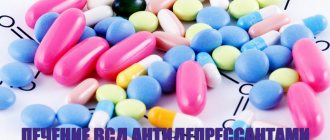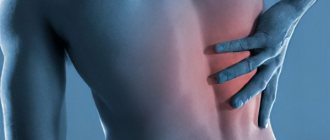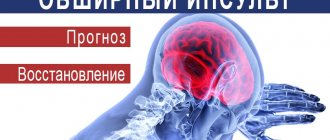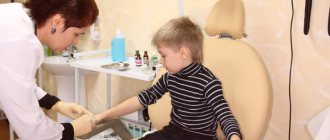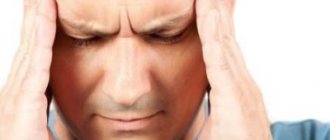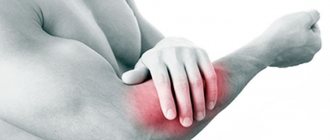Vegetovascular dystonia (VSD) is not classified as a separate disease. It is a set of symptoms associated with disruption of various body systems: nervous, cardiovascular and endocrine. Nowadays another name is often used – “neurocirculatory dystonia”.
Manifestations of VSD are painful and unpleasant, but do not pose a threat to life.
Headache is a condition that each of us has experienced at least several times. And it regularly occurs in about a third of the world's population. The origin of pain is different: trauma, tumors, pathologies of the brain and the entire nervous system. But the most common cause is vegetative-vascular dystonia, in which headache has its own characteristics.
Typically, cephalgia with VSD is accompanied by insomnia, dizziness, memory loss, and noise in the head and ears.
Causes of cephalgia with VSD
The main causes of headaches with VSD are:
- changes in the tone of the blood vessels of the head, causing hypoxia (oxygen starvation of the brain);
- increased effect of vessel walls on nerve endings during a sharp rise in pressure;
- violation of the outflow of venous blood;
- cerebral edema;
- hypotonicity or vasospasm.
Treatment is selected by the doctor after accurately determining the cause using ECG, encephalography, and magnetic resonance imaging.
GVA and what are its features
The international definition of the condition is autonomic dysfunction, but in our country it is called vegetative-vascular dystonia in the old fashioned way. This is a condition of the body in which malfunctions occur in the nervous regulation of autonomic functions. Vessels lose tone due to increased pressure, which either rises or falls. This process causes discomfort throughout the body and causes pain in the head.
According to experts, the main cause of VDS is stress and, as a consequence, neurosis. The body fights the effects of stress on its own, suppressing them, leading to the breakdown of all organs.
In addition to neuroses, risk factors include genetic predisposition, diseases of the central nervous system, gastrointestinal tract (gastrointestinal tract), metabolic system (endocrine) and cardiovascular disorders.
But in addition to somatic manifestations, alcohol abuse, smoking, and instability in the emotional sphere can be factors in the occurrence of VDS.
Classification and symptoms of headaches with vegetative-vascular dystonia
Headache due to vascular dystonia occurs most often in people who are weather-sensitive, overly emotional, suspicious, or suffering from phobias. If your head starts to hurt, you need to contact a neurologist and undergo an examination in order to find out exactly what type of cephalalgia your case relates to.
Migraine
One of the pathological conditions associated with VSD is migraine. The exact cause of this disease has not yet been clarified. It has been noticed that the disease manifests itself more often in women, and there is no age limit.
The following features distinguish migraine from other headaches:
- obsessive odors can trigger an attack;
- photophobia;
- nausea, vomiting;
- irritability;
- increased pain with sharp sounds;
- the desire to lie down, retire and be in silence.
Tension pain
The pain is manifested by a feeling of squeezing or heaviness in the head. It usually occurs in the evening due to overwork and stress. May be accompanied by pressing pain in the heart.
Cluster pain
Cluster cephalgia, unlike migraine, is diagnosed more often in men. This is severe unilateral pain that occurs at certain intervals several times a day. Exacerbations of the disease occur in autumn and spring, usually at the same time, lasting from 6 to 12 weeks.
Various factors provoke the active period. Among them:
- excess synthesis of certain hormones by the body (for example, serotonin, histamine);
- overwork, stressful situations;
- inflammation of the trigeminal nerve;
- drinking alcoholic beverages and smoking;
- problems with blood vessels and more.
Cluster headache is characterized by a sudden, rapid increase in drilling, burning, stabbing, pulsating pain in the area of the brow ridge. It goes to the jaw and ear. Lasts from 15 to 60 minutes. If you don't take action, after it subsides, it returns again with even greater force.
Cluster cephalgia is accompanied by certain symptoms: redness of the eye, lacrimation, nervous tics, nasal congestion. Moreover, they appear only on the side where the pain occurred.
Potent painkillers Codeine, Dikloberl, Ibuprofen, Diclofenac help alleviate the condition and reduce the frequency of attacks. These medications should be taken with great caution, as they have a detrimental effect on the mucous membrane of the esophagus and stomach and can cause bleeding.
It is necessary to exclude psycho-traumatic factors and bring working and rest conditions back to normal, give up bad habits and only then begin treatment.
Kinds
With vascular dystonia, pain in the head can be of any of the existing types:
- tension pain;
- by type of migraine;
- cluster;
- sinus.
The classification of headaches is presented in the photo below.
Types of pathological symptoms
So:
- Sinus pain occurs more often with sinusitis, but also occurs with vascular dystonia. It is characterized by localization in the forehead, bridge of the nose, infraorbital region, cheeks and cheekbones.
- Cluster pain covers the eye area, on one side or both. In this case, the patient often experiences photophobia, since light increases the pain.
- Most often, headaches with VSD are of the type migraine or tension pain . In the first case, pain occurs on one side, accompanied by nausea and photophobia. The pain is aggravated not only by light, but also by noise, so patients prefer to be alone in a dark, closed room. Patients with frequent migraine attacks are irritable and emotionally unstable.
- Tension pain is a diffuse soreness of a monotonous, compressive nature. It can cover the entire head like a helmet, or only the occipital or frontal part.
In one person with VSD, one type of pain may predominate, or all of them may be observed, depending on changes in the autonomic nervous system.
Methods for treating cephalgia with VSD
People are used to dealing with annoying headaches by drinking a painkiller pill. But the pain comes back again and again. And only when the usual means stop helping does a person go to the hospital.
It is necessary to select drugs for the treatment of headaches with vegetative-vascular dystonia, taking into account the general state of health. For example, with hypertension, vascular tone will help reduce burden. And for low blood pressure - Eleutherococcus extract. Treatment of symptoms should be comprehensive and include:
- drug therapy;
- help from a psychologist, neurologist or psychotherapist;
- physiotherapy;
- physical therapy;
- diet;
- massage;
- yoga;
- aromatherapy;
- general strengthening procedures.
List of effective drugs
The pharmacy will offer you many medications for severe headaches. But we should not forget that the independent use of medications without prior approval from a doctor can greatly harm your health.
Typically, the following tablets are prescribed for headaches with vascular dystonia:
- For pain relief from the group of analgesics: Solpadeine, Askofen, Aspirin.
- To reduce the impact of stress: “Persen”, “Motherwort”, “Laycan”, “Sanoson”.
- To cope with insomnia: Donormil, Zopiclone.
- For disorders of the blood supply to the brain: “Glycine”, “Noofen”.
For problems with blood pressure, “Capoten”, “Diroton”, “Diokor” (for hypertensive patients), “Caffetin” and “Symptol” (for hypotension) are additionally prescribed.
Important! The doctor must select the drug and determine its dosage!
Help from a psychotherapist
Since the manifestations of the disease are directly related to the psycho-emotional state of the patient, the practice of seeking help from a psychotherapist is one of the main directions in the treatment of VSD. Methods for each patient are selected individually, and they are aimed at teaching the patient to cope with their fears.
Among the technical approaches used in practice, the following are suitable for the treatment of VSD:
- psychoanalysis (the doctor identifies and eliminates a problem from the past);
- behavioral psychotherapy (a specialist, considering recent unfavorable situations from different points of view, teaches the patient how to change his attitude towards the problem);
- Gestalt therapy (teaching the patient to distinguish between the main and the background in situations, the ability to focus on the main thing and not focus on the secondary);
- hypnotherapy (depending on the degree of excitability of the patient’s psyche, deep hypnosis or light (Ericksonian) hypnosis is used, when a person, being conscious, does not even suspect that therapy is being carried out).
In the initial stages of the disease, psychological help can cure most symptoms of VSD. A competent specialist will teach you to understand your reactions to various situations, manage them, overcome fears, and correctly exit conflict situations.
Treatment with folk remedies
Treat headaches with vegetative-vascular dystonia and folk remedies.
VSD can be treated at home only after consulting a specialist. Self-diagnosis and self-medication can aggravate the problem!
Healing from an illness must be approached comprehensively:
- Auto-training will help you tune in to eliminating the problem, overcome fear, uncertainty, and establish a positive psychological state (the attending physician will recommend the methods).
- Light massage of the scalp.
- Improving cerebral circulation as the main cause of cephalgia in VSD. Traditional medicine recipes proven by more than one generation will help solve this problem:
Ointment based on bee products:
- 25 g crushed propolis,
- 2 tbsp. l. natural honey,
- 1 tbsp. spoon of butter or glycerin
- mix until a homogeneous mass is obtained and rubbed into the scalp and legs on the calves before going to bed).
Duration of use is no more than 2 weeks, and if allergic reactions occur, rubbing should be stopped immediately.
Herbal decoction:
- birch buds,
- medicinal chamomile,
- St. John's wort herb,
- elecampane root
- rose hip
mixed in equal parts, pour boiling water at the rate of 2 cups per 100 g of dry mixture in an enamel container. Next, bring to a boil, cool and strain. Dissolve 1 tbsp in a slightly warm broth. a spoonful of honey. Take 1/3 cup after waking up in the morning and in the evening before bed.
Oatmeal broth:
- 1 cup washed oat grains,
- 1 liter of water,
- 0.5 liters of milk (preferably homemade),
- 3 tbsp. spoons of honey.
Pour water over the oats overnight, boil in the morning until they begin to thicken, strain, add boiled milk and honey. Mix thoroughly. Take 1/3 cup several times a day, regardless of meals.
There are many more recipes that have long been used to get rid of headaches. Even 1 tbsp. warm milk with 1 teaspoon of honey, drunk at night in 1 - 2 weeks will give a positive result. Choose a method that suits you, use it constantly, and improvement will definitely come.
Don't make a mistake with the diagnosis
A condition in which a headache occurs is already some kind of change in the body. Moreover, illnesses associated with headaches can be very different, including cancer. But pain with vegetative-vascular dystonia has its own characteristic signs, by which you can find out that they are associated with VDS.
- Headache is not acute.
- Dizziness due to a painful head condition is not uncommon.
- Vertigo (dizziness) when changing body position.
- Congestion and tinnitus.
- The pain appears in the morning and can continue throughout the day.
- With changes in body position, the pain may become pulsating.
- Localization of pain manifests itself in different parts of the head or pain throughout the head.
- The pills don't really help.
- Occasionally, swelling appears under the eyes or on the forehead.
- Pain appears on the back side of the neck.
- No pain in the scalp at night.
But in addition to these symptoms, VDS has other signs of manifestation, which most often affect the condition of the blood vessels: capillary mesh on the eyeball, slight swelling in the lower eyelids, instability of blood pressure, nasal congestion, sore throat.
Often, vegetative vascular dystonia with dizziness provokes pulsating, loud beats (in hypotensive patients), nausea and even vomiting are not uncommon.
Discomfort throughout the body can also affect other organs and systems: respiratory - shallow, rapid breathing; Gastrointestinal tract - bloating, flatulence, constipation, frequent desire to empty the intestines. Legs and hands actively sweat due to vasoconstriction. The sexual sphere also suffers - lack of libido, frigidity, erectile dysfunction.
List of drugs
To treat headaches with severe vegetative-vascular dystonia, specific medications are prescribed. You should not select them yourself:
- Natural remedies – motherwort, St. John’s wort;
- Bromine-based sedatives (bromocamphor, sodium bromide);
- Sedatives for protection against stress – Sedafiton, Persen;
- Nootropics for stimulating blood flow and brain – Glycine, Noofen;
- Drugs to lower blood pressure;
- Tranquilizers are prescribed by a psychiatrist for anxiety and panic attacks;
- Cerebroangiocorrectors to normalize blood circulation in the brain (Caviton, Pentoxifylline);
- Analgesics – Aspirin, Paracetamol, Spazmalgon, Nise.
Sleep medications may also be prescribed - Donormil, Zopiclone and other drugs available with a doctor's prescription.
Important! For the treatment of migraine, intense analgesics can be prescribed - Solpadeine, Askofen-P.
For headaches and heaviness in the heart area, accompanied by vegetative-vascular dystonia, you can use tablets and drops such as Corvalol, Valoserdin.
Treatment in various ways
There are many ways to relieve headaches, but VSD firmly rejects most of them. The disease requires a comprehensive approach, and pills alone cannot help. Moreover, eliminating headaches is possible without drug intervention with a complete review of your life with diagnosed dystonia:
- Regular observation by a doctor;
- Changing lifestyle, introducing regular walks, balancing work and rest;
- Changing the diet, including foods for immunity and blood vessels. Elimination of too salty, fatty and sweet foods;
- Introduction of moderate physical activity;
- Complete cessation of bad habits.
The doctor prescribes medications for headaches depending on the problem.
Causes of headaches
Headaches with VSD usually appear against a background of exhaustion, chronic lack of sleep, and fatigue. The main cause of dizziness is severe stress. Constant stress causes high blood pressure and tachycardia. Long-term such conditions lead to incessant headaches. Autonomic disorders occur due to social conflicts. The presence of unresolved problems is a source of dizziness. The causes of the pathogenic symptoms of VSD can be divided into two groups: external and internal. External reasons include:
- infectious diseases;
- severe stress;
- Unhealthy Lifestyle;
- overload, both physical and emotional;
- brain damage;
- chemical and radioactive radiation.
Internal factors are as follows:
- genetic predisposition;
- diseases of internal organs;
- hormonal disorders;
- physical inactivity.
Basically, vegetative-vascular dystonia in the form of headaches begins due to disturbances in the blood supply to the brain. As a rule, this occurs due to diseases of the cardiovascular system. Sometimes diagnostics do not find any disturbances in the blood circulation of the brain. In this case, attacks of headaches most often occur due to chronic fatigue. Also, such painful conditions can occur due to regular stress and poor nutrition. As a rule, such disorders develop due to a decrease in the production of endorphins and serotonin. Repeated stress conditions are the main cause of the development of chronic diseases. The trigger can be strong feelings, conflicts in the family, unstable social factors.
Types of pain syndrome in VSD and their differences
Doctors classify three types of such pain:
- Pain from tension.
Associated with the appearance of strong shocks, tension, and constant worry in a person. This pain is also typical for people whose work involves mental stress and regular concentration of attention and memory. Severe headaches are present in all parts with a feeling of squeezing.
- Migraine.
Most often it occurs in women. The cause of its appearance can be affected by strong noise and a person being in a large crowd of people. Being under stress, drinking alcohol, strenuous exercise, and even being in a steam room can cause a migraine. When it occurs, a strong pulsation begins to occur in one side of the head, as well as acute pain in the temporal zone that can spread to the forehead and eyes. This condition is usually accompanied by nausea, vomiting, chills, a feeling of numbness in the limbs, as well as a feeling of irritation to light and noise.
- Cluster pain.
They are mainly observed in men, and manifest themselves in the form of prolonged attacks, especially at night. The most severe pain is observed at the beginning of the attack in the form of acute pain on one side of the head. Pain can also occur in the temporal region, forehead and eyebrows. Pain often occurs in the jaw, chin and cheeks. They are accompanied by such signs as facial redness, increased sweating and lacrimation.
How does a headache occur with VSD - a description of the sensations
One of the symptoms of a malfunction of the vegetative system is headache.
A person begins to feel discomfort in the early morning. The painful sensation may subside for several hours or last until the evening.
The severity of such pain often depends on the position of the person’s body.
The headache may worsen if a person bends over or straightens up abruptly. If the pain is intense, then the person seems to feel a loss of reality and becomes detached.
If a headache lasts from day to day, then it greatly exhausts its owner and general health worsens. Sleep can provide relief during headaches.
Sport improves a person’s well-being, but sometimes headaches occur after physical activity. Should this symptom be alarming?
Menopause is accompanied by many unpleasant symptoms, including headaches. We will analyze the mechanism of its development here.
Tension headaches are the most common type of headache. In the article you will find information about the treatment of tensor pain - with drugs and traditional methods.
